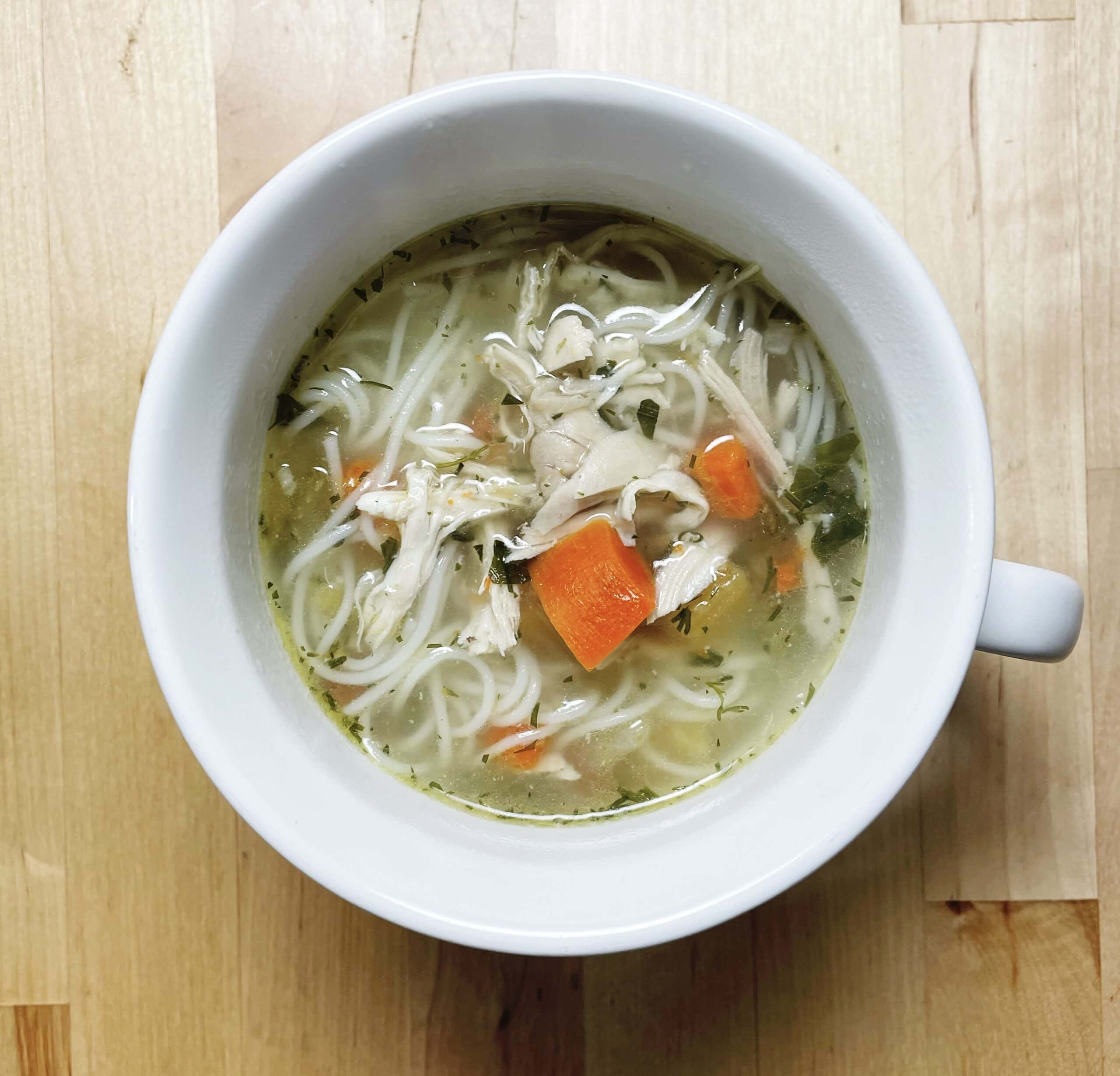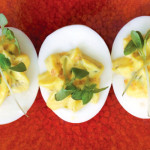
Wondering what do do with all of that chicken bone broth? As summer is coming to a close, cold and flu season is right around the corner. Not to mention, covid-19 is still circulating. Stocking the freezer with nourishing homemade chicken soup is one of the biggest favors you can do for future you.
There are so many versions of chicken soup around the world, from Greek Avgolemono to Thai Tom Kah Kai, to Mexican Chicken Tortilla soup, and they’ll all be enriched by using homemade bone broth. When I’m sick, I crave my version of Jewish Chicken Soup, taught to me by my dad. Leave out any noodles or rice for freezing, cook them fresh, and add just before serving to help keep their texture.
My version of Jewish Chicken Soup contains three ingredients you might not have tried. One of them, the humble rutabaga is actually a nutritional powerhouse and functions both as a root and a cruciferous vegetable. Other root vegetables are carrots, parsnips, beets, and tend to be a good form of starch. Cruciferous vegetables include kale, broccoli, cauliflower, and Brussels sprouts, and are known for their anti-cancer vitamins and minerals. Less starchy than other root vegetables, while containing the anti-cancer phytochemical called sulforaphane. They also freeze really well in the soup. I include a lot of fresh parsley and fresh dill in my recipe, probably more than my dad adds. Parsley is an rich source of Vitamin A and Potassium, and dill is a good source of Vitamin C and Manganese. It also has a history of traditionally being used to help balance women’s hormones.
- 2 tablespoons extra virgin olive oil, reserved bacon fat, coconut oil, ghee, or other fat of your choice
- 1 yellow onion, medium dice
- 3-4 medium carrots, scrubbed or peeled, cut into quarter moons, sliced medium
- 4 stalks of celery, sliced medium
- ½ lb rutabaga, thick peel cut off, and cut into a medium dice (feel free to use more or omit if its out of season or you just don’t like it)
- salt, to taste
- freshly ground pepper, a few grinds, or to taste
- 3-4 cloves of garlic, minced
- 1 chicken, broken down and breasts, legs, and thighs separated, or 3 lbs of bone in chicken breasts or thighs, or 2 lbs boneless chicken (use whatever you have on hand or feel comfortable with)
- 3 quarts of homemade or store-bought chicken bone broth (regular stock will work fine in this recipe, but just won’t provide as much depth of flavor or density of nutrients. check out this blog post for instructions on how to make your own chicken bone broth.)
- pinch of red pepper flakes (optional)
- 1 bunch flat-leaf parsley (washed three times), tough stems discarded if desired, roughly chopped
- 1 bunch dill (washed three times), tough stems discarded if desired, roughly chopped
- Heat a large stock pot or dutch oven over medium-high heat. Add the fat of your choice and heat until lightly shimmering. Add the onion, carrots, celery, rutabaga, several large pinches of salt, and pepper. Sweat the vegetables for 5-7 minutes, stirring regularly, then add the garlic, continuing to stir and cook for 1 minute more.
- Add the chicken to the stock pot, and add bone broth to cover. (Feel free to add either water or store-bought broth if you don’t have enough homemade broth. I like the Bonafide brand.) Add a pinch (or more) of red pepper flakes. One pinch won’t add noticeable spiciness, but just gives the soup a subtle warmth. Add another large pinch or two of salt. I usually add about ½-1 teaspoon at this point. Its important to salt as you go so that the seasoned liquid gets inside the meat and vegetables as they cook. Don’t wait until the very end of the process to salt!
- Bring to a medium-boil over medium-high heat. Cover and lower the heat to medium-low or low to maintain a slow simmer (just a few bubbles).
- Depending on your stove’s simmer strength and the size of your chicken parts, boneless chicken breasts or thighs will be done in 10-20 minutes. Bone-in chicken will take 15-25 minutes. To prevent over- (or under-) cooking your chicken, use an instant-read thermometer. (I like ThermoPro.) Chicken breast is done at 165 degrees and dark-meat is better between 175-190 for a more tender bite, to let the connective tissue get a bit softer. Using tongs, remove the chicken to a bowl and let cool until you can easily shred the meat with your hands.
- Check the tenderness of your vegetables. They should be soft enough to be pierced easily with a fork, but not falling apart. If they’re a bit too al-dente, bring the soup to a lively simmer over medium heat and continue to cook, checking on the vegetables every 5 minutes until they’ve reached your desired doneness.
- Shred your chicken meat, or chop into bite-sized pieces, adding back into the pot along with any accumulated juice. (Save any bones in the freezer for your next batch of bone broth.)
- After I add the shredded chicken, sometimes I may need to add a little bit more water or broth to get the desired balance of liquids to solids. Taste and add more salt if needed.
- Lastly, add the fresh herbs.
- If you want to add noodles to your soup, cook them separately according to the package directions, and combine them with the soup right before serving. Do not freeze your soup with cooked noodles in it, they just won’t hold up.
**If you have a large enough stock pot and the freezer space, this recipe can be doubled.
Do you have a go-to chicken soup recipe? Try using homemade or store bought bone broth as the base to make it extra nourishing! The richness and depth of flavor will blow you away.








